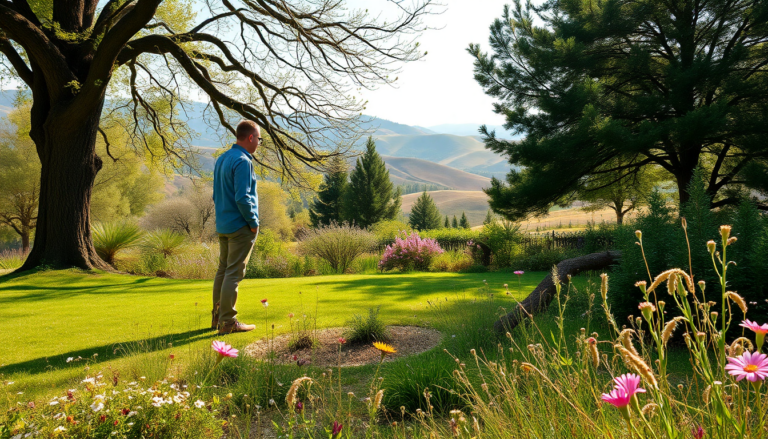Argomenti trattati
In a world where we often crave quick fixes, landscape designers are advocating for a thoughtful, patient approach called site watching. But what exactly does that mean? Essentially, it’s about taking the time—sometimes up to a year—to observe a property before diving into any major design changes. The goal? To create a vibrant landscape that works in harmony with the local climate and terrain, rather than fighting against it.
Understanding the concept of site watching
Site watching goes beyond simply noting where the sunlight hits; it’s a deep dive into understanding the landscape’s nuances. By keeping an eye on aspects like light shifts, drainage patterns, and the health of existing plants, designers can gather crucial insights into the ecosystem at play. As Rebecca Montross, director at Kathryn Herman Design, puts it, “Landscapes are ever-changing.” This means that a one-time glance can’t capture the full story; ongoing observation reveals the land’s true potential.
Amanda Blake, a talented landscape designer with experience at the New York Botanical Garden, highlights the importance of tuning in to the land’s voice: “The land leads the conversation.” By listening closely, designers can forge a deeper connection with the space, which is vital for crafting designs that resonate with both the landscape and its inhabitants.
Key observations during site watching
So, how do you kick off the site watching process? Blake suggests starting with some basic observations: Track how light changes throughout the day, listen to ambient sounds, and watch how the wind plays with trees and plants. These insights become even more valuable when you revisit the site across different seasons and weather conditions—even during storms! This kind of comprehensive observation nurtures a richer understanding of the land.
Don’t overlook the existing flora, either. Plants that thrive in a given area—even those often labeled as weeds—can provide significant clues about what will flourish there. Recognizing these natural indicators allows designers to create landscapes that are not only beautiful but also sustainable.
Moreover, considering how the outdoor space will be used is essential. Identifying daily views and making minor adjustments can significantly enhance the visual experience and overall enjoyment of the landscape. Integrating elements that bring joy on a daily basis is at the heart of effective design.
The role of wildlife in landscape design
Wildlife plays a pivotal role in shaping the character of any landscape. Blake recommends leveraging technology—like apps such as Merlin—to identify local birds and wildlife. These observations can uncover surprising insights into the ecosystem. Understanding pollinator pathways, migration patterns, and even the practice of “leaving the leaves” in fall can greatly influence design strategies, making the habitat more inviting for local species.
As Montross points out, the patterns of sun and shade evolve not just with the seasons, but also as landscaping elements transform over time. “Being a landscape architect is about translating one’s observations and vision into drawings,” she explains. A simple design can embody countless hours of careful observation and thoughtful consideration.
Balancing immediacy with observation
While the benefits of site watching are clear, not every client will want to wait an entire year before making design decisions. This is where a hybrid approach comes into play. Designers can work on a comprehensive master plan while also pinpointing areas that can provide “instant results.” This strategy strikes a balance between immediate gratification and honoring the land’s natural evolution.
Montross often finds that respecting existing landscape features can lead to immediate satisfaction. “Honoring what’s already there” can result in a more cohesive and visually pleasing outcome. Editing and simplifying the landscape can also yield transformative results without requiring a hefty investment.
Both Montross and Blake agree that their most rewarding projects emerge from patience and extended observation. This process allows the land’s true character to shine through, leading to designs that feel genuine and interconnected.
Montross recalls a particularly fulfilling long-term project: “We had the privilege of visiting the site for years before the client was ready to commit to a design.” This period of observation fostered a profound understanding of the land, enabling the team to optimize features like home orientation and plant placement. Such familiarity can illuminate the site’s best attributes.
Blake also shares a touching experience designing a memorial space for a friend. Her deep familiarity with the site—its seasonal changes and natural rhythms—was key in crafting a design that honored both the spirit of the land and her friend’s memory. The resulting garden continues to evolve, reflecting the landscape’s dynamic nature.
In the end, the practice of site watching allows landscapes to unfold their needs and potentials over time, creating environments that are resilient and deeply connected to their surroundings. How might this approach change the way we think about and interact with our outdoor spaces?

